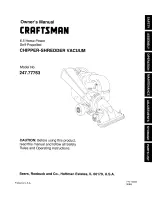
Installation Water Piping
Overview
Several water piping circuits must be installed and con-
nected to the chiller.
Note:
Piping must be arranged and supported to avoid
stress on the equipment. It is strongly recom-
mended that the piping contractor refrain from
piping closer than 3 feet (0.91 m) minimum to the
equipment. This will allow for proper fit-up upon
arrival of the unit at the job site. Any adjustment
that is necessary can be made to the piping at
that time. Expenses that result from a failure to
follow this recommendation will not be paid by
Trane.
•
Pipe the evaporator into the chilled water circuit;
•
Pipe the condenser into the cooling tower water cir-
cuit.
•
A heat-recovery condenser water circuit, (optional);
•
An auxiliary condenser water circuit, (optional)
Piping suggestions for each of the water circuits listed
above are outlined later in this section. General recom-
mendations for the installation of field supplied piping
components (e.g., valves, flow switches, etc.) common
to most chiller water circuits are listed below.
Water Treatment
The use of untreated or improperly treated water in a
CenTraVac may result in inefficient operation and possi-
ble tube damage. Trane strongly recommends engaging
the services of a qualified water treatment specialist to
determine necessary water treatment. A label with a
customer note disclaimer note is affixed to each unit.
D
NOTICE
Proper Water Treatment!
The use of untreated or improperly treated water in a
CenTraVac could result in scaling, erosion, corrosion,
algae or slime. It is recommended that the services of
a qualified water treatment specialist be engaged to
determine what water treatment, if any, is required.
Trane assumes no responsibility for equipment failures
which result from untreated or improperly treated
water, or saline or brackish water.
Pressure Gauges
Locate pressure gauge taps in a straight length of pipe.
Place tap a minimum of one pipe diameter downstream
of any elbow, orifice etc. Example, for a 6” (152 mm)
pipe, the tap would be at least 6” (152 mm) from any
elbow, orifice, etc.
Valves - Drains and Vents
D
NOTICE
Waterbox Damage!
Failure to follow instructions could result in damage
to the waterbox. Do not over-tighten or use exces-
sive Teflon® pipe tape when installing valves, drains,
plugs and vents on waterboxes.
1. Install field-supplied air vents and drain valves on the
water boxes. Each water box is provided with a 3/4”
(19 mm) National Pipe Thread Female (NPTF) vent
and drain connection. Plastic plugs are factory-in-
stalled in both openings for shipment; remove and
discard these plugs before installing the water box
vents and drain valves.
D
NOTICE
Over pressurization!
Failure to install pressure-relief valves in the con-
denser and evaporator water circuits could result in
waterbox damage due to hydrostatic expansion.
2. If necessary for the application, install pressure-relief
valves at the drain connections on the evaporator
and condenser water boxes. To do so, add a tee with
the relief valve attached to the drain valve Follow lo-
cal codes for determining if drain connection is large
enough for relief devices.
To determine whether or not pressure relief valves are
need ed for a specific application, keep in mind that:
a. Vessels with close-coupled shutoff valves may
cause high potentially damaging hydrostatic pres-
sures as fluid temperature rises.
b. Relief valves are required by American Society
of Mechanical Engineers (ASME) codes when the
shell waterside is ASME. Follow ASME guidelines
or other applicable codes to assure proper relief
valve installation.
Strainers
D
NOTICE
Tube Damage!
Failure to install strainers in all water piping entering
the chiller could result in tube plugging conditions
that damage unit components.
Install a strainer in the entering side of each piping
circuit to avoid possible tube plugging in the chiller with
debris.
RELEASED 10/Mar/2020 06:59:20 GMT
















































